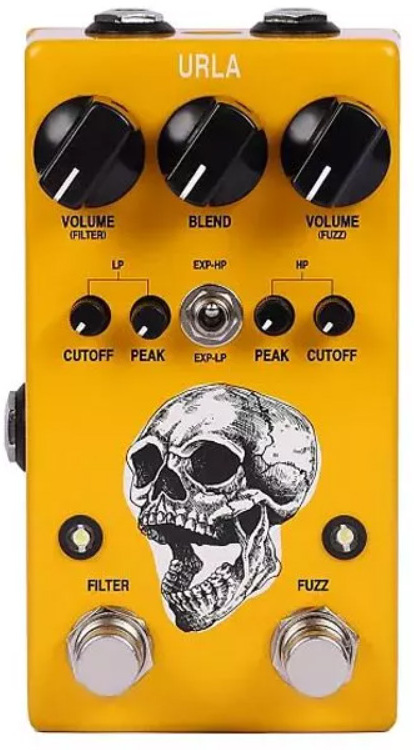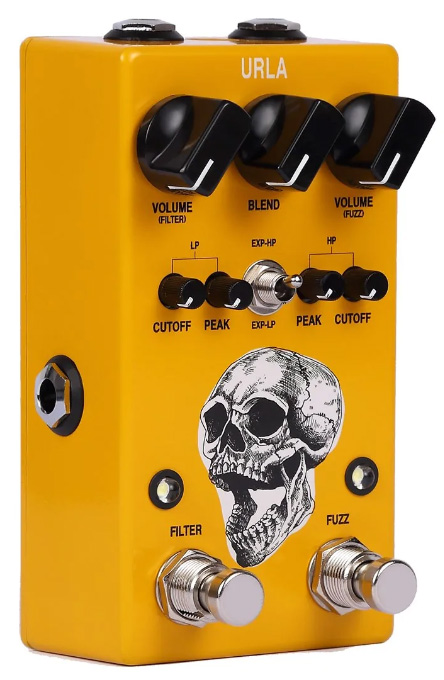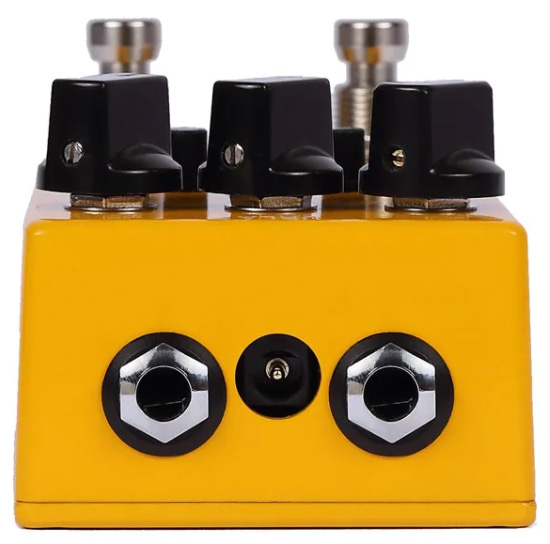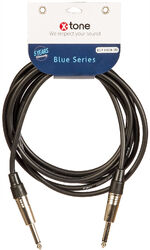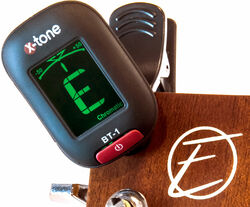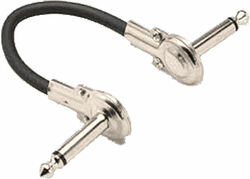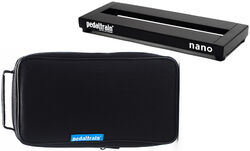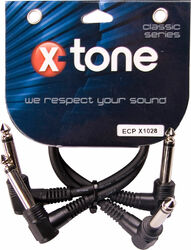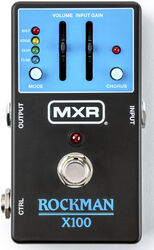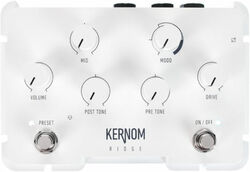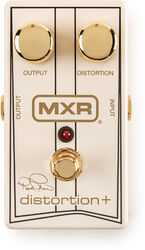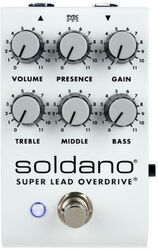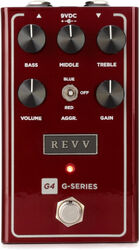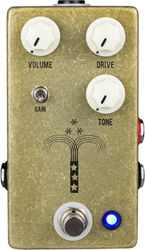Warenkorb
Ac noises Urla CMOS Fuzz + Dual Resonant Filter
- Bewertungen lesen (0)
- Zugehöriges Zubehör
- Ähnliche Produkte
VIDEO
VIDEO
- Kostenlose Lieferung
- Günstige Preise garantiert
- Zufrieden oder erstattet
- 3 Jahre Garantie
Im moment nicht verfügbar
kontaktieren Sie uns
Lagerbestand
Nicht im Geschäft erhältlich
INFORMIEREN SIE MICH ÜBER SEINEN EINTRAG AUF LAGER
Ich möchte per E-Mail benachrichtigt werden
Go
Die Marke Ac noises
Erfahren Sie mehr über die Marke Ac noises und entdecken Sie den gesamten Katalog.
Kaufberatung für Bassgitarren-Effekte
Wie navigiert man durch die Fülle der auf dem Markt erhältlichen Effektpedale? Star's Music zieht Bilanz, folgen Sie dieser Kaufberatung!
Wenden Sie sich an einen Experten
Unsere musikbegeisterten und begeisterten Teleberater sind hier, um alle Ihre Fragen zu beantworten.
Overdrive/distortion/fuzz effektpedal
AC NOISES Urla CMOS Fuzz + Dual Resonant Filter is a loud, aggressive and experimental compact pedal which consists in 2 effects in 1 device.
A CMOS chip works with digital logic (1, 0).
Compared to the transistor based fuzz circuits (both germanium or silicon), in a CMOS fuzz there is no "in-between", no "dynamic range", no "vintage tone" or anything like that. There are just 1s and 0s, so no matter which kind of waveshape you put into it: the output will always be square wave with no adjustable gain neither since the square wave is as distorted as it can get.
The URLA obviously makes no exceptions and it provides an overdriven, brutal, glitchy and gated fuzz sound with a decay that dies abruptly (but still allowing to sustain each note thanks to a bass boost stage that we put at the very beginning of the signal path).
Blend control allows to blend the fuzz sound with the original signal placed in front of the URLA. Clean guitar tone is probably the most basic example in that sense but no doubt the bravest sonic adventures could find plenty of different as exciting solutions (e.g. as "wall of sounds" enthusiasts, we do love to place a shimmer reverb in front of it or some modulation as well to create different kind of textures). Being a fully analog jFET blend, it goes from almost completely DRY (counterclockwise) to 100% wet signal (clockwise).
Dual Resonant Filter is the second effect placed in the internal signal chain of the URLA and it consists in a faithful replica of the analog filter section of the glorious Korg MS-20, simply one of the most famous vintage monophonic synthesizer.
It's an HIGH PASS filter connected in series with a LOW PASS one, both adjustable with their relative controls of CUTOFF and PEAK. Also, we added a dual potentiometer to control the VOLUME of both, which is pretty useful in order to dial with other output levels in chain (including the internal FUZZ placed in front).
You can use the URLA with any expression pedal (by using a TRS cable) to control the cutoff of your favorite filter (HP or LP).
A CMOS chip works with digital logic (1, 0).
Compared to the transistor based fuzz circuits (both germanium or silicon), in a CMOS fuzz there is no "in-between", no "dynamic range", no "vintage tone" or anything like that. There are just 1s and 0s, so no matter which kind of waveshape you put into it: the output will always be square wave with no adjustable gain neither since the square wave is as distorted as it can get.
The URLA obviously makes no exceptions and it provides an overdriven, brutal, glitchy and gated fuzz sound with a decay that dies abruptly (but still allowing to sustain each note thanks to a bass boost stage that we put at the very beginning of the signal path).
Blend control allows to blend the fuzz sound with the original signal placed in front of the URLA. Clean guitar tone is probably the most basic example in that sense but no doubt the bravest sonic adventures could find plenty of different as exciting solutions (e.g. as "wall of sounds" enthusiasts, we do love to place a shimmer reverb in front of it or some modulation as well to create different kind of textures). Being a fully analog jFET blend, it goes from almost completely DRY (counterclockwise) to 100% wet signal (clockwise).
Dual Resonant Filter is the second effect placed in the internal signal chain of the URLA and it consists in a faithful replica of the analog filter section of the glorious Korg MS-20, simply one of the most famous vintage monophonic synthesizer.
It's an HIGH PASS filter connected in series with a LOW PASS one, both adjustable with their relative controls of CUTOFF and PEAK. Also, we added a dual potentiometer to control the VOLUME of both, which is pretty useful in order to dial with other output levels in chain (including the internal FUZZ placed in front).
You can use the URLA with any expression pedal (by using a TRS cable) to control the cutoff of your favorite filter (HP or LP).
Lire la suite
Technisches Arbeitsblatt
- Fuzz Ja
- für E-Gitarre Ja
- AC NOISES Urla CMOS Fuzz + Dual Resonant Filter
- SKU AC Noises AC-URL
- Combines a CMOS fuzz circuit before a Dual Resonant Filter circuit
- For guitar and bass
- 2022
- Each circuit features its own controls and footswitch
- CMOS chip works with digital logic (1, 0) providing an overdriven, brutal, glitchy and gated fuzz sound
- Dual Resonant Filter circuit emulates analog filter section of the Korg MS-20 vintage monophonic synthesizer
- You can use the URLA with any expression pedal (by using a TRS cable) to control the cutoff of filter (HP or LP)
- Controls : see pictures
- In/outs : see pictures
- True bypass by relay + soft touch switch
- Powered via optional 9VDC (negative center)
- Current draw 100 mA
Weitere Spezifikationen
Weniger Spezifikationen
